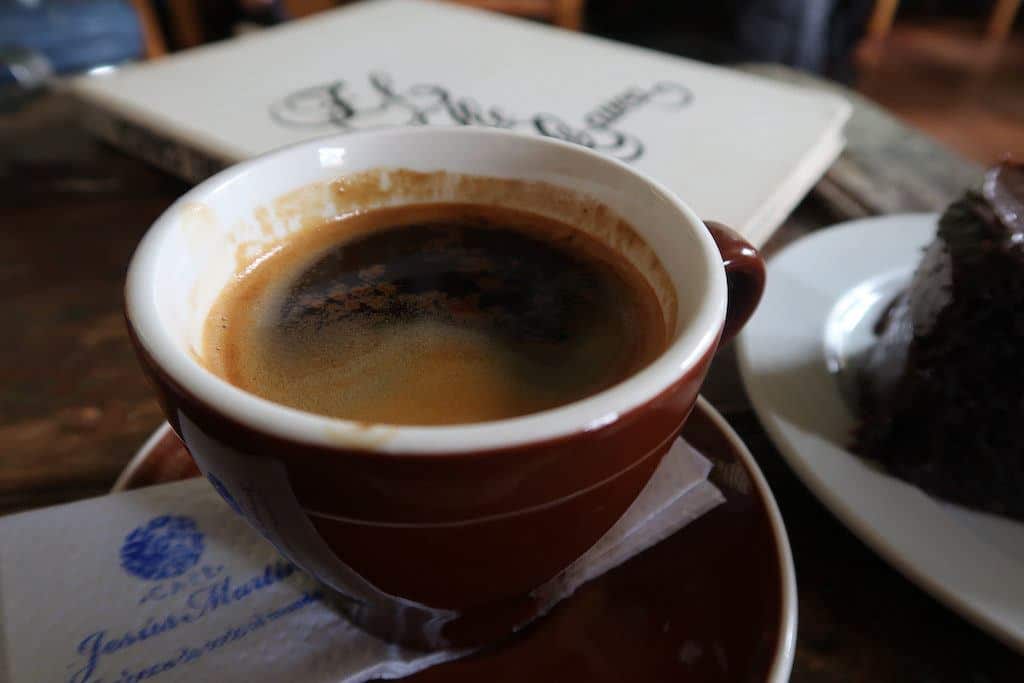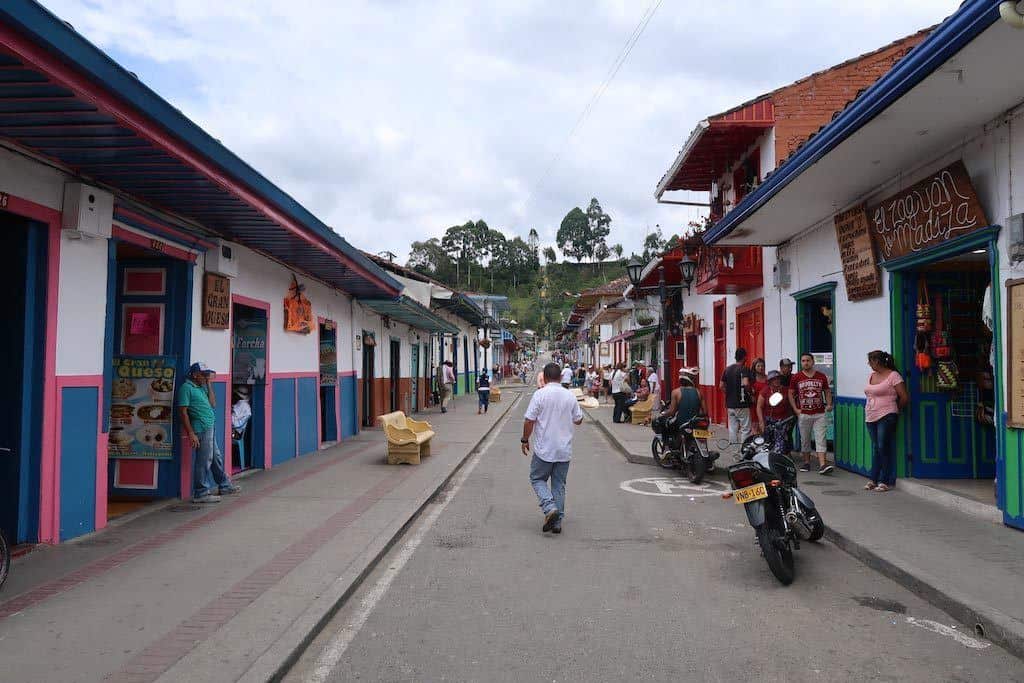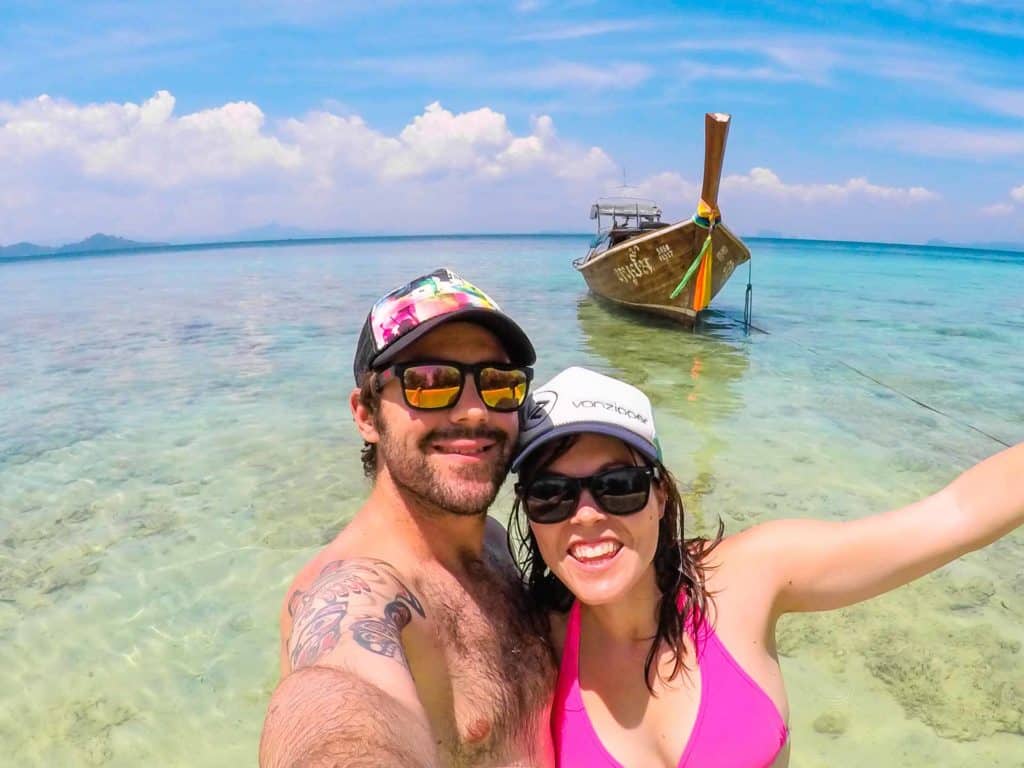Welcome to the Colombia coffee region! Colombia is not only one of the most rich and bio device countries in Latin America.
But also it holds some of the world’s best tasting coffee!
With the advent of specialty coffee in North America and Europe, more people are becoming coffee-conscious and want to learn more about the coffee-making process.
For many years, Colombian coffee has been stocked on the shelves of our supermarket.
And it has had a reputation for being some of the best coffee in the world.
Colombia is also noted as one of the largest exporters of coffee and in this guide, you’ll learn why the Colombia coffee region is one of the most visited places in the country right now.
Today, coffee lovers and backpackers who are seeking new travel experiences like to visit the coffee region to learn all about the coffee production process and everything there is to know about coffee.
READ MORE: Check out our top travel tips from more than a decade on the road!
In this guide, we are going to look at some of the best things to do whilst exploring Eje Cafetero, the coffee region in Colombia.

Table of Contents
Exploring Colombia’s Coffee Triangle
Whether you are just looking for new things to do in Colombia or searching for some of the finest coffee beans in the country, this guide will show you a unique cultural treat that you can appreciate and hopefully add to your travel itinerary.
Seeing how locals drink coffee in Colombia gives you a better idea of just how much of a cultural significance the warm drink has for people of all ages and from different social and economic backgrounds.
Coffee Shops in Colombia
There are many coffee shops in Colombia.
A part of the challenge and what you have to remember when looking for the best coffee is that most of the best coffee gets exported.
Coffee has always been a part of Colombia’s culture and everyday life. But in recent years the coffee movement has grown to new heights.
Now more locals are taking time out to learn about specialty coffee and how to prepare it – not just grow it.
The result of this is that some of the growers hold back their best batches which ultimately get sold in local cafes.
So, if you’re in either Bogotá and Medellín for example, you’ll have many options. However, this doesn’t guarantee you’re getting the best.
The good news is that some of the smaller and local coffee shops like Pergamino have grown over the years as a result of offering the finest coffee to which most coffee lovers just can’t ignore.
So, let’s put the infamous Juan Valez aside for a moment and take a look at where you’ll need to position yourself on a visit to the coffee triangle.

Places to Learn About Coffee in Colombia
First of all, let’s look at some of the regions where coffee grows in Colombia.
To do this let’s look at the three departments in the Colombian coffee growing axis that make up the famous coffee triangle in the Colombia coffee region.
- Antioquia – Boasts traditional coffee towns such as Jardin and Jercio.
- Caldas – Part of the Paisa region and known for coffee towns such as Manizales.
- Quindío – Famous for the most successful coffee harvest in the history of Colombia.
- Risaralda – Well known for the sheer high quality of its coffee.
It’s worth noting that this large stretch of land, which is made up of a group of the smallest departments in Colombia, was declared as a World Heritage Site by UNESCO in 2011.
Things to do in the Colombia Coffee Region
Not only is Colombia one of the few countries in the world that drinks coffee as part of a cultural tradition, but also Colombia is home to some of the world’s finest coffee beans.
Here we’re going to look a little closer to some of the places in which you visit and some of the things you can do whilst you drink coffee and explore the Colombia coffee region.
1) Take a Coffee Tour in Jardin
Firstly, make a trip to Medellin, Colombia’s second most important city.
In Medellin, you can taste some coffee in the aforementioned Pergamino coffee shop before heading out.
Not to mention, from Medellin you’ll find it relatively easy to get to Jardin, a small town in the South of Antioquia.
With just a 3-4 hour bus ride, you’ll find yourself in the picturesque town of Jardin.
This town has people from all over Colombia visiting as it is one of the most preserved towns in the Antioquia region and home to arguably some of the country’s best coffee.

Outside of spending time observing the plaza and mingling with locals, you can find various day trips that can be taken.
Look out for a trip to Finca Florida where you can learn all about the organic coffee production process.
If you don’t have a guide, you may need to brush up on your Spanish skills as Isabel the owner don’t speak much English.
Knowing a bit of Spanish in Colombia always goes a long way. I was able to get so much more detailed information by asking basic questions.

2) Visit Salento in Quindio
Salento, situated within the coffee triangle’s Quindio department, is another coffee town popular with many travellers to Colombia.
As the idyllic weekend getaway spot for many locals, you will find Salento west of Bogota, Colombia’s capital and most important city.
Known for its coffee estates and the famous Cocora Valley, you can quite easily find a superior cup of coffee.
Jesus Martin was my favourite. Not to mention there is an abundance of outdoor activities to keep you entertained.
This quaint town fills up with local and international tourists over the weekend so you can expect accommodation to be tight then.
It is advisable to book any weekend stay in Salento well in advance. Or plan to visit the town during the week when it is less busy.
You can take one of the many Jeeps situated in the Plaza to transport you to Cocora valley.

3) Hike Cocora Valley
Whilst in Salento, depending on the time you have, it’s recommended that you head over to Cocora Valley.
Many locals that travel to Salento visit to go hiking around Cocora Valley.
It is here where you’ll find Colombia’s national tree, the wax palm.
This tree, which can grow upwards of 60 metres, has no relation to coffee.
But instead, it has become more and more popular due to the influx of Instagram posts depicting its elongated beauty.
The Cocora Valley trek is surrounded by the wax palm, and a stroll through the valley transports you through a Jurrasic park-like atmosphere.
This is a great addition to any trip to the Colombia coffee region.
Horseback rides are one of the popular ways to do the trail.
There are a few tour agencies on-site that offer you packages to do both short and long trips around the area by horse.
READ MORE: 11 reasons you’re going to want to visit La Paz, Bolivia
4) Visit Jericó at the Heart of the Colombia Coffee Region
If you liked the idea of going to Jardin, you’re going to love Jericó.
This quaint coffee town appears even more well-preserved than Jardin.
Whether it’s hiking up to the Christ Redentor viewpoint and admiring the view of the town from above or exploring Jericó’s botanical gardens, you’ll feel at home rather quickly.
When it comes to coffee, though, Jerició is full of surprises.
You won’t see any chic coffee shops like the ones in Medellin. Nor will you find many seats for locals to sit around sipping on Tinto as you will in Jardin.
Jerició is unique.
You may have to dive one level deeper to connect yourself with some of Southern Antioquia finer cups of coffee.
One place you must check out is Don Rafa or even El Café y El Bulevar.
The specialty coffee wave has landed here in Jericó as you can ask for your coffee prepared in many different ways.
The Chemex is one of the most popular methods with many specialty coffee drinkers.

5) Head to Santa Rosa de Cabal
Santa Rosa de Cabal is another gem located in the Colombia coffee region.
Here you’ll find a thermal natural spring that offers an interesting experience for anyone looking to relax after a few days of coffee hunting.
The thermal spring is the main attraction in the area and you’ll not want to miss it.
You can, of course, do coffee tours here. Finca Del Cafe offers a popular tour that allows you to learn everything about the local coffee from seed to cup.
Like most of the other coffee tours in Colombia, you get to learn all of the steps included.
Everything from growing the seed right up to harvest. Then, the whole drying and roasting process.
Not to mention, you will also have the opportunity to pick your own coffee beans!

Getting Around Coffee Towns in the Colombia Coffee Region
In most of the coffee towns in Colombia, you find that the best way to get around is by jeep.
The jeeps known as Willys are the traditional way local coffee farmers transport their crops from point A to B.
They also operate as a hop-on-hop-off taxi service for both locals and tourists.
It is highly recommended that you carry suitable footwear and a decent range of clothes.
This is especially true if you are going to be doing farm tours and other outdoor activities.
In most of the coffee towns, you will find that although it can get hot during the day it gets chilly in the evening.
So if you plan to stay overnight at a coffee farm or stay higher within the mountains, ensure that you have a few extra layers to keep you warm.
A pair of decent boots or hiking shoes will be necessary.
Coffee farms are not dry and arid places. Instead, think wet and hilly walkways with mud-sliding banks and frequent showers.
These are the conditions in which the best coffee grows, so remember to visit the Colombia coffee region prepared.
There is no one perfect time to visit the Colombia coffee region.
However, you may want to avoid travelling to this region during any Colombian holiday weekend or the Christmas and New Year period.
Many people return to the region from working in bigger cities or have vacation homes or fincas that they visit at that those times of the year.
Expect everything to be busier than usual and the prices to rise higher than the norm.

How to Taste the Best Coffee in Colombia
Here are some tips on how to find and taste some of the best coffee in Colombia.
You have to remember that if it wasn’t for Colombia’s unique landscape, relentless cultivation and the specially selected coffee trees it wouldn’t be possible to cultivate such good coffee.
The coffee that you drink in Colombia is usually of the Arabica variety and the superior taste is very hard to replicate in other parts of the world.
Even when you take Colombia’s coffee out of Colombia it often doesn’t taste as good as it did before it left. However, you can be the judge of that.
Below are some tips you can employ to ensure you get that superior cup of coffee that you deserve whilst in Colombia.
- Look for Organic coffee
- Avoid adding sugar or sweetener
- Always ask for your coffee in a cup (not a paper one)
- Avoid adding milk
- Don’t drink the coffee whilst it’s piping hot
- Ensure your coffee beans are freshly ground
- Ask which department your coffee was cultivated
Using these suggestions you’ll be able to increase your chances of sipping the best coffee Colombia has to offer.
On the rare occasion where there is no specialty coffee insight, some people even carry their own travel coffee makers to ensure they are getting a barista-style brew no matter where they go.
Depending on your love for coffee you may be content sipping the same coffee as the locals do, know as Tinto.
This filter coffee blend can be found nearly everywhere in Colombia. And it is drunk daily by most of the population.

In Summary
So now you have a better idea of what to expect when exploring the Colombia coffee region.
The next question is where will you begin?
Whether it is starting in Bogota and heading to Salento and the Cocora Valley or starting your adventure in Medellin heading toward Jardin, you will be sure to have a great time!
With so many things to do in Colombia, you can’t leave the country without experiencing rural life.
Coffee is one of the country’s most celebrated products, and you’ll find leaving the bigger cities and visiting the coffee region a unique and rewarding experience!

